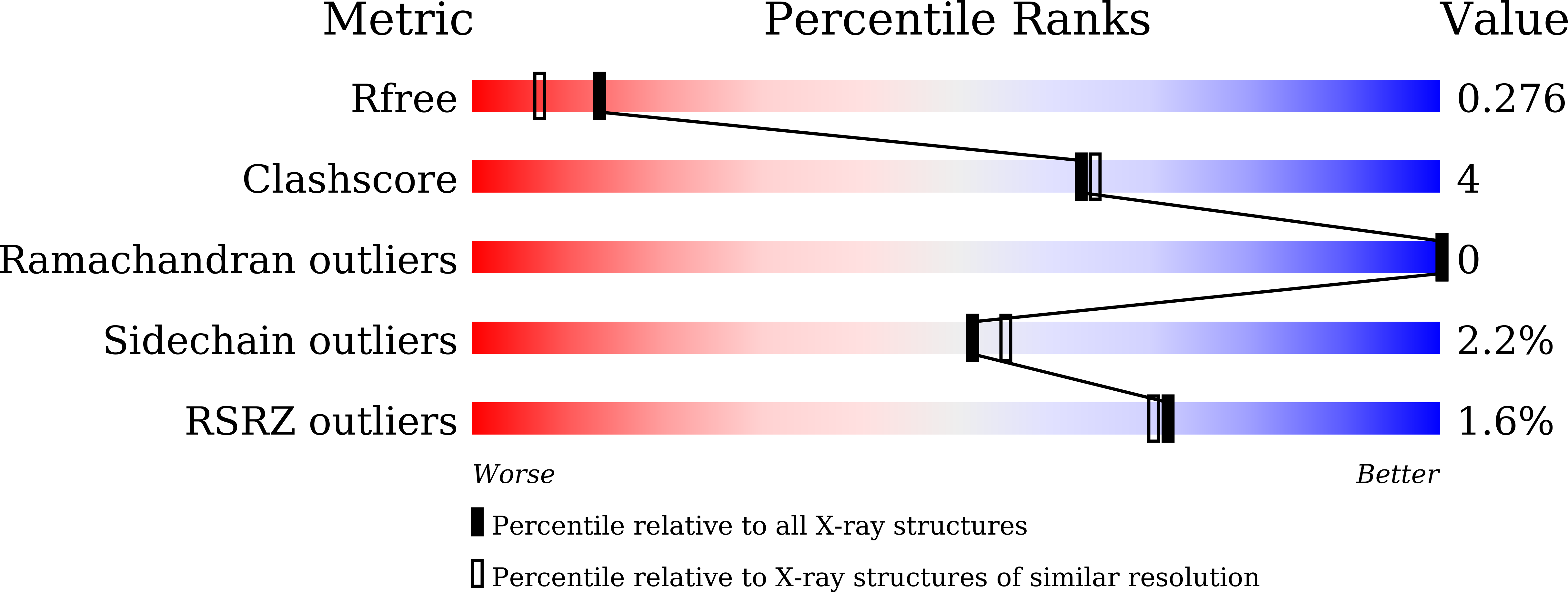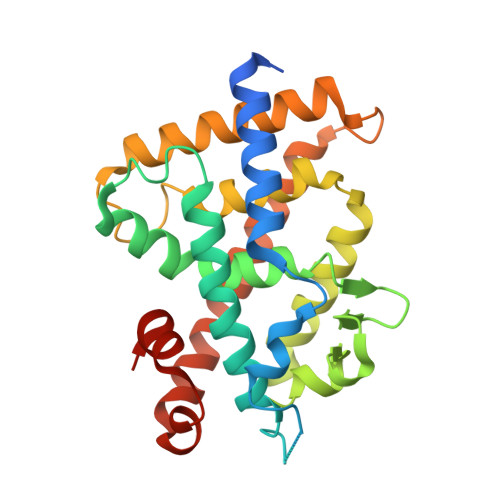Lithocholic Acid Derivatives as Potent Vitamin D Receptor Agonists.
Sasaki, H., Masuno, H., Kawasaki, H., Yoshihara, A., Numoto, N., Ito, N., Ishida, H., Yamamoto, K., Hirata, N., Kanda, Y., Kawachi, E., Kagechika, H., Tanatani, A.(2021) J Med Chem 64: 516-526
- PubMed: 33369416
- DOI: https://doi.org/10.1021/acs.jmedchem.0c01420
- Primary Citation of Related Structures:
7C7V, 7C7W - PubMed Abstract:
Lithocholic acid ( 2 ) was identified as a second endogenous ligand of vitamin D receptor (VDR), though its activity is very weak. In this study, we designed novel lithocholic acid derivatives based on the crystal structure of VDR-ligand-binding domain (LBD) bound to 2 . Among the synthesized compounds, 6 bearing a 2-hydroxy-2-methylprop-1-yl group instead of the 3-hydroxy group at the 3α-position of 2 showed dramatically increased activity in HL-60 cell differentiation assay, being at least 10 000 times more potent than lithocholic acid ( 2 ) and 3 times more potent than 1α,25-dihydroxyvitamin D 3 ( 1 ). Although the binding affinities of 6 and its epimer 7 were less than that of 1 , their transactivation activities were greater than that of 1 . X-ray structure analyses of VDR LBD bound to 6 or 7 showed that the binding positions of these compounds in the ligand-binding pocket are similar to that of 1 .
Organizational Affiliation:
Department of Chemistry, Faculty of Science, Ochanomizu University, 2-1-1 Otsuka, Bunkyo-ku, Bunkyo, Tokyo 112-8610, Japan.

















